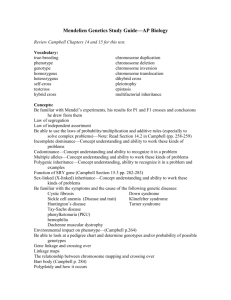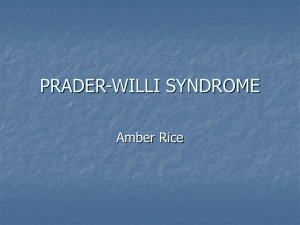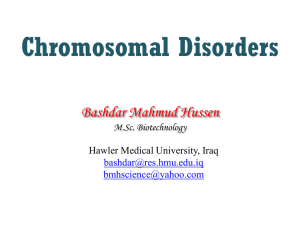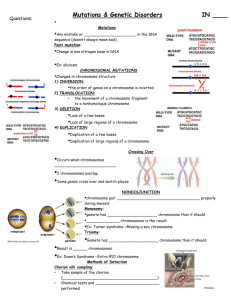File
advertisement
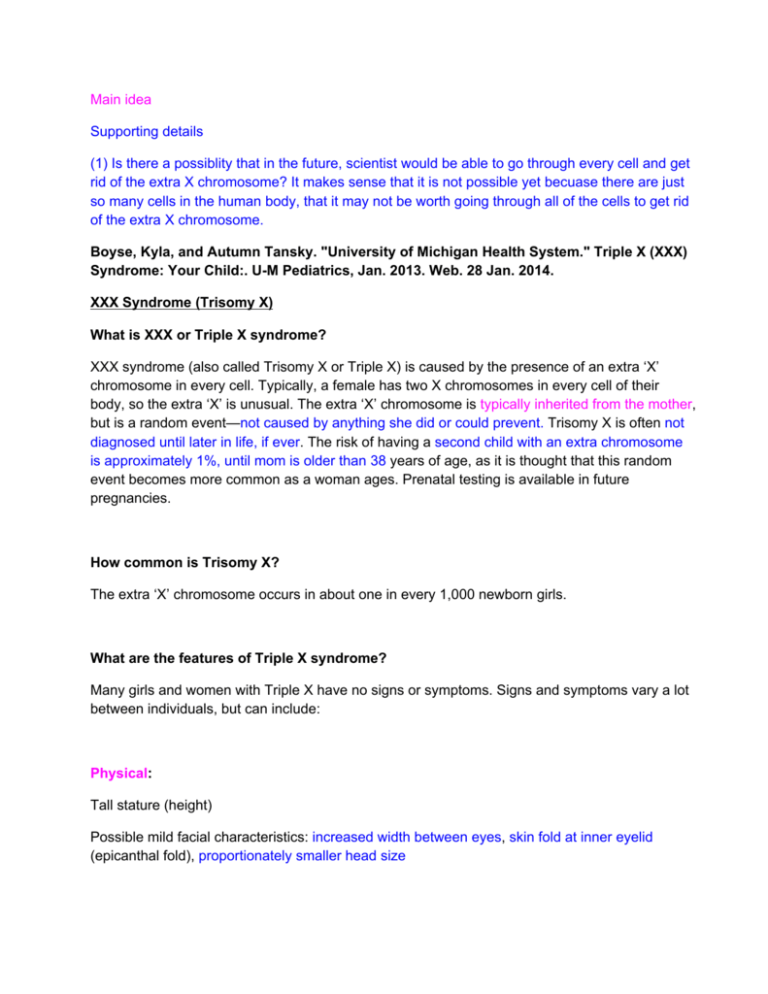
Main idea Supporting details (1) Is there a possiblity that in the future, scientist would be able to go through every cell and get rid of the extra X chromosome? It makes sense that it is not possible yet becuase there are just so many cells in the human body, that it may not be worth going through all of the cells to get rid of the extra X chromosome. Boyse, Kyla, and Autumn Tansky. "University of Michigan Health System." Triple X (XXX) Syndrome: Your Child:. U­M Pediatrics, Jan. 2013. Web. 28 Jan. 2014. XXX Syndrome (Trisomy X) What is XXX or Triple X syndrome? XXX syndrome (also called Trisomy X or Triple X) is caused by the presence of an extra ‘X’ chromosome in every cell. Typically, a female has two X chromosomes in every cell of their body, so the extra ‘X’ is unusual. The extra ‘X’ chromosome is typically inherited from the mother, but is a random event—not caused by anything she did or could prevent. Trisomy X is often not diagnosed until later in life, if ever. The risk of having a second child with an extra chromosome is approximately 1%, until mom is older than 38 years of age, as it is thought that this random event becomes more common as a woman ages. Prenatal testing is available in future pregnancies. How common is Trisomy X? The extra ‘X’ chromosome occurs in about one in every 1,000 newborn girls. What are the features of Triple X syndrome? Many girls and women with Triple X have no signs or symptoms. Signs and symptoms vary a lot between individuals, but can include: Physical: Tall stature (height) Possible mild facial characteristics: increased width between eyes, skin fold at inner eyelid (epicanthal fold), proportionately smaller head size Developmental: Learning disabilities (70%): Normal IQ, but may be 10­15 points below siblings Speech and language delays (50%) Delayed motor skills: poor coordination, awkwardness, clumsiness Behavioral: introverted, difficulty with interpersonal relationships How is Triple X diagnosed and treated? XXX syndrome is diagnosed prenatally, through CVS or amniocentesis, or after the child is born by a blood test. These tests are all able to look at a person’s chromosomes (karyotype.) There is no way to remove the extra X chromosome (1). Treatment depends on what needs the child has. Girls with XXX syndrome may need to be seen by physical, developmental, occupational, or speech therapists if they have developmental or speech problems. Additionally, a pediatric psychologist or group therapy may be helpful if they have social troubles. Girls with Trisomy X are treated as any other child with a developmental or psychological concern would be treated. What is 46,XX/47,XXX mosaicism? This describes a chromosome study that shows a mixture of normal cells and cells with an extra X chromosome. A girl with mosaicism will usually have fewer effects of the extra chromosome, because not all of her cells have this extra genetic material. She will probably not be much different than she would be if her chromosome study showed all normal cells. Where can we find additional information and support? Information and support: Triple X syndrome on the Genetics Home Reference, a guide to understanding genetic conditions. Includes links and tools for more in­depth information. Triple X Females: An Orientation—an online booklet on a Danish Turner syndrome website that has a good basic overview of the syndrome. It was written in 1991 and may be somewhat out of date. Trisomy X e­mail message group for all those affected by XXX syndrome. Klinefelter Syndrome and Associates is a non­profit organization that began to provide information and support for those affected by Klinefelter syndrome, but now has grown to cover many sex chromosome (X and Y chromosome) disorders, including Triple X. Related topics on YourChild: YourChild: Genetic Syndromes YourChild: Chronic Conditions YourChild: Developmental Delay YourChild: Siblings of Children with Special Needs Related services at the University of Michigan: Genetics Clinical Care: The Division of Pediatric Genetics provides service in the diagnosis, treatment and prevention of: birth defects structural abnormalities inherited diseases chromosomal abnormalities and mental retardation Pediatric genetics also cares for children with genetic disorders. Services include an evaluation to identify genetic diseases, chromosomal analysis, amniocentesis for prenatal diagnosis, molecular and DNA diagnostics, genetic counseling. Compiled by Kyla Boyse, RN. Reviewed by Autumn Tansky, MS. Updated January 2013 U­M Health System Related Sites: U­M Pediatrics



